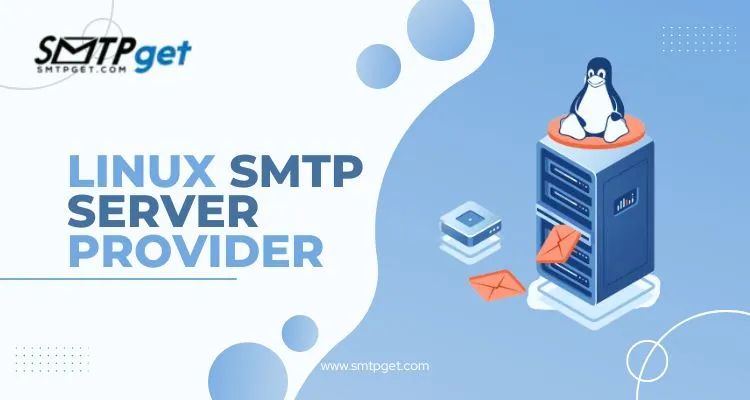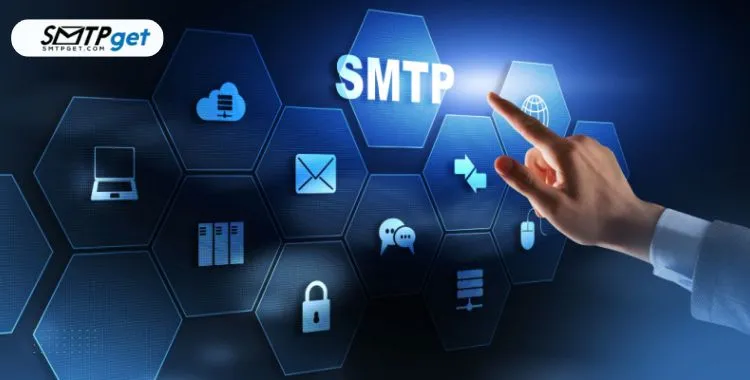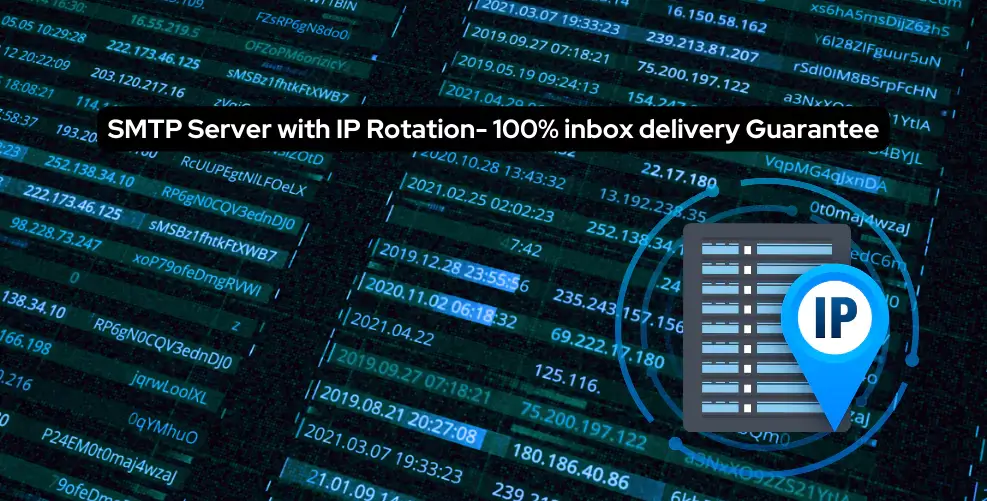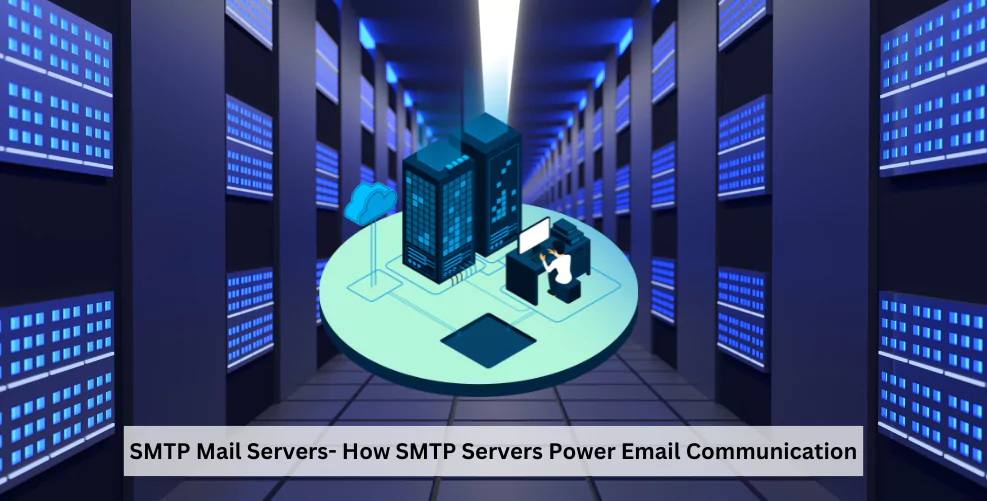Are you looking for a reliable Linux SMTP server provider? SMTP (Simple Mail Transfer Protocol) is essential for sending and receiving emails. For businesses that run their systems on Linux, having a dedicated best SMTP server Linux ensures smooth email communication. Linux mail servers offer high performance, security, and flexibility, making them a great choice for handling bulk emails or business communication.

Linux mail server providers also provide better control over your email system, allowing for custom configurations and enhanced privacy. This makes best SMTP server Linux ideal for companies that value secure and efficient email management. This article explores the importance of a Linux mail server provider, discusses the benefits it offers, provides guidance on setting up and configuring such a server, and highlights best practices for optimal email deliverability.
Understanding SMTP Servers
SMTP servers act as the backbone of email communication by facilitating the transfer of emails between senders and recipients. They serve as intermediaries responsible for accepting, forwarding, and delivering messages across networks.
When an email is sent, the best Linux mail server performs a series of actions, including address verification, relaying the email to the recipient’s server, and notifying the sender of the delivery status.
Benefits of a Linux SMTP Server Provider
A Linux mail server provider offers numerous advantages for businesses and organizations. Let’s explore some of the key benefits-

Reliability- Linux is renowned for its stability and robustness, making it an excellent choice for hosting SMTP Server for Email Marketing. The reliability of Linux systems ensures minimal downtime and consistent email delivery.
Customizability- Linux provides extensive flexibility, allowing organizations to customize their SMTP servers according to specific requirements. This flexibility enables tailored configurations that align with business needs.
Security- Linux operating systems are renowned for their strong security measures. By leveraging a Linux SMTP server provider, organizations can ensure the confidentiality and integrity of their email communication, protecting sensitive information from unauthorized access.
Cost-effectiveness- Linux is an open-source platform, eliminating the need for costly licensing fees. Choosing a Linux SMTP Service provider enables organizations to reduce their expenses while still maintaining high-quality email delivery services.
Setting up a Best Linux Mail Server
Setting up a best Linux SMTP server involves the following steps-
- Choose the Linux Distribution- Select a Linux distribution that best suits your organization’s needs and preferences. Popular options include Ubuntu, CentOS, and Debian
- Install the Required Software- Install an SMTP server software package such as Postfix or Exim. These software packages provide the necessary functionality for managing email transmission.
- Configure Domain and DNS- Set up your domain and configure DNS records such as MX (Mail Exchanger) records to direct incoming email traffic to your Linux SMTP Server Services.
- Configure Server Parameters- Customize your SMTP server for bulk email settings, including domain-specific configurations, security options, and relay settings.
Our Pricing:
| Pricing | Cheapest Plan | Standard Plan | Professional Plan |
| SMTP Server Services | $110 | $165 | $220 |
| Bulk Email Server | $50 | $145 | $225 |
| Bulk Email Service | $30 | $110 | $220 |
Configuring SMTP Relay on Linux
SMTP relay allows your Linux SMTP server provider to forward outgoing emails to another email server for delivery. Follow these steps to configure the SMTP relay on Linux-
- Install an MTA (Mail Transfer Agent)- Select a reliable MTA like Sendmail or Postfix, and set it up on your Linux server for seamless email delivery.
- Configure Relay Parameters- Set up the relay configuration by specifying the destination email server and the necessary authentication details.
- Test and Verify- Send test emails to validate that the relay configuration is working correctly.
Securing Your Linux SMTP Server
Ensuring the security of your Linux SMTP server is crucial to protect against potential threats and vulnerabilities. Here are some essential steps to secure your Linux SMTP server-

- Update and Patch Regularly- Keep your Linux operating system and SMTP server software up to date with the latest security patches. Regular updates help address known vulnerabilities and ensure that your server is protected against emerging threats.
- Implement Access Controls- Configure firewall rules and access control lists (ACLs) to restrict access to your SMTP server. Limit incoming connections only to trusted IP addresses or networks, preventing unauthorized access attempts.
- Enable Encryption- Enable SSL/TLS encryption for secure email transmission. This ensures that the communication between your SMTP server and the email client is encrypted, protecting sensitive information from interception or eavesdropping.
- Implement Strong Authentication- Require strong passwords for user accounts and enforce password complexity rules. Consider implementing two-factor authentication (2FA) for an extra layer of security.
- Enable Logging and Monitoring- Enable Linux SMTP Service provider logging to track and monitor incoming and outgoing email activity. Regularly review the logs to detect any suspicious or unauthorized activities.
- Implement Intrusion Detection Systems (IDS)- Deploy IDS solutions that can detect and alert you about any potential security breaches or unusual activities on your SMTP server.
- Regularly Backup Data- Set up a robust backup system to regularly back up your SMTP server data. In case of data loss or server compromise, you can quickly recover your data and immediately resume operations without any downtime.
Implementing these security practices will greatly strengthen your Linux SMTP server’s security, safeguarding the integrity and confidentiality of your email communications.
Monitoring & Troubleshooting SMTP Server Performance
Monitoring and troubleshooting SMTP server provider performance is essential to maintain efficient email delivery. Here are some tips to help you monitor and troubleshoot your Linux SMTP Service provider-

- Monitor Server Metrics- Use monitoring tools to track server metrics such as CPU usage, memory utilization, disk space, and network traffic. Monitoring these metrics allows you to identify potential performance bottlenecks and take proactive measures to optimize server performance.
- Monitor Email Queue- Keep an eye on the email queue to ensure that emails are being processed and delivered promptly. If the email queue is growing excessively or emails are stuck in the queue, investigate the issue to identify and resolve any underlying problems.
- Check SMTP Logs- Regularly review the SMTP logs to identify any error messages or delivery failures. The logs can provide valuable insights into the root causes of email delivery issues, allowing you to take appropriate actions to resolve them.
- Test Email Delivery- Send test emails to various email addresses and providers to ensure that emails are reaching their intended recipients without any issues. Test emails can help identify deliverability problems or spam classification issues that might affect email delivery.
- Monitor Blacklist Status- Regularly check if your SMTP server’s IP address is listed on any email blacklists. Being blacklisted can severely impact email deliverability. If your server is blacklisted, take the necessary steps to address the underlying issues and request removal from the blacklist.
By actively monitoring and troubleshooting your Linux SMTP server’s performance, you can ensure smooth email delivery and promptly address any issues that may arise.
Best Practices for Email Deliverability
To ensure optimal email deliverability and prevent common issues, follow these key practices.

Maintain a Good Sender Reputation- Maintain a strong sender reputation by adhering to email sending best practices, including sending emails only to opt-in recipients, avoiding spam trigger words, and efficiently processing unsubscribe requests.
Use Proper Email Authentication- Implement SPF (Sender Policy Framework), DKIM (DomainKeys Identified Mail), and DMARC (Domain-based Message Authentication, Reporting, and Conformance) to authenticate your email and improve deliverability. These authentication protocols verify the integrity of your emails and help prevent spoofing and phishing attacks.
Optimize Email Content- Craft engaging and relevant email content that provides value to recipients. Use personalized subject lines, clear and concise messaging, and compelling calls to action. Avoid excessive use of images or attachments that may trigger spam filters.
Manage Bounce and Unsubscribe Rates- Monitor and manage bounce rates to remove invalid email addresses from your mailing list. Provide a visible and easy-to-use unsubscribe option in your emails to allow recipients to opt out if they no longer wish to receive your communications.
Avoid Spam Triggers- Be mindful of common spam triggers such as excessive use of exclamation marks, misleading subject lines, or sending emails with large attachments. These practices can increase the chances of your emails being flagged as spam.
Maintain Good List Hygiene- Regularly clean your email list by removing inactive or unengaged subscribers. This helps improve deliverability and ensures that your messages reach recipients who are genuinely interested in your content.
Test and Monitor Deliverability- Use email deliverability testing tools to assess the deliverability of your emails across different providers and devices. Monitor email deliverability rates and analyze any issues to make necessary adjustments and optimizations.
By implementing these best practices, you can enhance your email deliverability, maintain a positive sender reputation, and ensure that your emails reach the intended recipients’ inboxes.
Conclusion
A Linux SMTP server provider plays a crucial role in ensuring reliable email delivery for businesses and organizations. By leveraging the stability, customizability, and security of Linux, organizations can establish robust SMTP servers that facilitate efficient and secure email communication.
Setting up and configuring the best SMTP server Service Providers, along with implementing proper security measures, monitoring performance, and adhering to best practices, can significantly enhance email deliverability and improve overall communication effectiveness.








